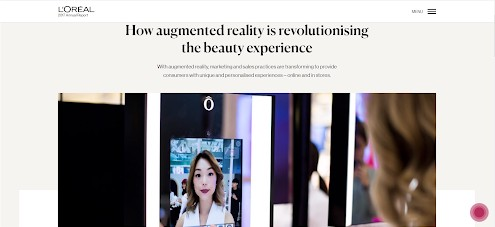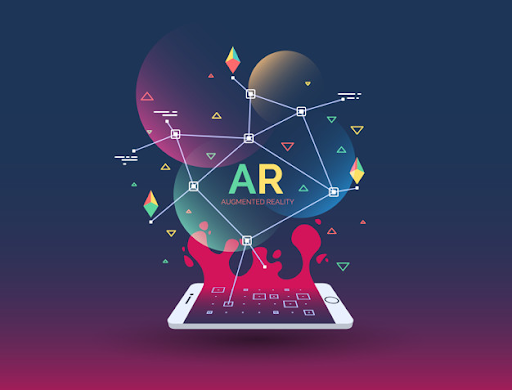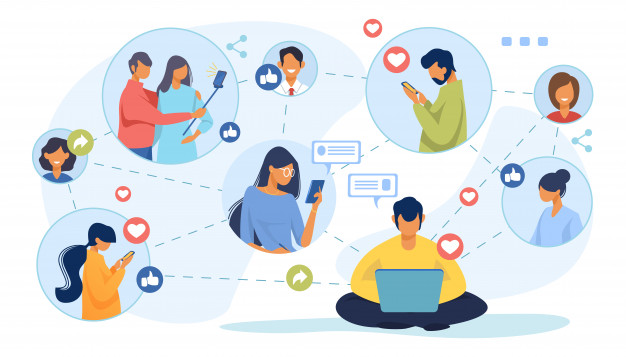Product personalization is no longer a luxury, but we can say a must-have for any business. According to a study by Epsilon, 90% of respondents surveyed said that they found the personalization appealing. And 80% would do a business with a brand that provides personalized experience.
So, providing product personalization has become one of the most important and competitive things for any business.
If you also want to stay competent and relevant, it is high time you incorporated product personalization into your business. Businesses have different ways of personalizing customer experience.
If you are interested in knowing the latest product personalization trends, keep reading.
1. Augmented Reality (AR) and Virtual Reality (VR)
Augmented Reality and Virtual Reality (AR/VR) are transforming the entire e-commerce scenario. AR/VR help customers give the ‘in-store’ experience even remotely.
Augmented shopping helps engage customers with brands and products through digital experiences, and personalize their products virtually. These digital experiences help store owners provide a more intuitive and better shopping experience than simple web experiences.
There are various brands that have already started adopting this next-gen technology.
In the fashion industry, Levi’s has announced an array of new digital experiences in association with renowned apps and tech companies. This apparel brand took this decision to overcome the Covid-19 social distancing restrictions.
A number of other fashion retailers have introduced new digital experiences in recent months due Covid-19 store closures. Another fashion-retail brand Asos, US too has also trialled AR by Zeetech company a few months ago.
In beauty e-commerce stores, L’oreal Paris released its first-ever beauty augment reality lenses for Snapchat’s desktop app. It will let customers try on looks from Garnier, Lancome, L’oreal Paris, Maybelline, etc.

Walmart, one of the most renowned American multinational retail corporations, is also set to run a test for a new app. This app aims to reduce the time to get items from the back room to the sales floor via AR. Similarly, it will also test AR to enable customers to check out by themselves.
2. Mobile Experience – Still remains the top priority!
If you fail to give a seamless mobile experience, you are out of the race! According to a study, mobile e-commerce sales is forecast to reach $3.56 tn dollars. So, it is high time you focussed on mobile customization of your store.
Ensure that your site is mobile friendly and responsive. This will help you engage mobile users better. In the same way, it is equally important to make your product customization options equally responsive and easy-to-use on mobile screens.
3. Real-time Display
Earlier, product customization would involve customers filling their customization choices (image, color, text, etc.) and submitting them. They wouldn’t get to view the final mockup to get an idea of how the product will look like.
Due to this, they would not get what they envisioned at times. Consequently, the order returns/replacements would go high. This would lead to wastage of both the store owner’s and customer’s time. To add insult to injury, it would lead to a bad impact on the brand image.
However, the situation has changed now for the better. The customers no longer have to wait till they receive the product at their doorstep. They can not only mention their design specifications but also “design” the product by themselves in real time. They can also preview the design of the product before checkout and change it if need be.
Hence, the customer stays satisfied and you get to upkeep the brand image and resources. A win-win situation!
4. Engaging Product Customization Options
With the emergence of several online product design tools, product personalization options have gone higher than ever before. Currently, all online print store owners are incorporating the best-in-class product customization services for customers.
They are integrating cutting-edge online product designer tools with numerous intuitive product customization options into their stores.
Right from the text, images, clipart, to even the material and printing process; customers can choose it all. That too right at their home with just a single click.
Are you also looking for a next-gen online product design tool to enhance your customers’ experience?
Our Brush Your Ideas Online Product Design Software can be the right pick for you.
5. Visual Search Shopping
As per a study by MIT neuroscientists, a human brain can identify the images it sees for as little as 13 milliseconds. Visual search is the ability to use any image to search for identical or relevant visuals. According to a study, the world-wide visual search market is forecast to cross $14,727mn by 2023.
There are some companies that have already embraced visual search technology. Some of the popular companies are Pinterest, Amazon, Visenze, Syet, and Google Lens.
Consider it with an example of Amazon.
StyleSnap, an AI-powered feature, is available on the Alexa and Amazon app. With this feature, Amazon has stepped into the visual search market. With StyleSnap, Amazon aims to power fashion discovery with deep learning and help influencers expand their community. To use StyleSnap, all users need is to click the camera icon in the top-right corner of the app and select the “StyleSnap” option. After it, users can upload a photograph or screenshot of a fashion look of their choice. StyleSnap will fetch all the recommendations of products similar to that in the photo on Amazon. While providing recommendations, StyleSnap considers a variety of factors including brand, price range, customer reviews, etc.
Amazon is also entering into unique partnerships with other brands like Snapchat to enhance customer experience.
6. AI-Powered Personalization

Ever opened any e-commerce app and found a number of product recommendations for you?
Ever found emails from brands requesting you to check out the best picks for you?
Well, I am sure you must have experienced it all. Welcome to the world of Artificial Intelligence!
AI helps improve various aspects of an e-commerce business.
In this digital age, big companies are investing in AI-powered personalized experiences.
Major e-commerce giants like Amazon, Etsy, and others are using AI to enrich customer experience. Video-streaming platforms like Netflix or Amazon Prime are also not behind in this race.
They use previous consumer data, apply algorithms on browsing patterns, and come up with the best marketing and engagement strategies. All through the use of Artificial Intelligence.
With this level of product personalization, customers are sure to get attracted easily and faster.
AI-Powered Search Engines (or “Insight Engines”)
They combine customer search with machine learning capabilities to fetch the most accurate and personalized results.
Pricing Optimization
To help e-commerce businesses display the right offer at the right time for better sales.
Auto-generated Product Descriptions
Creating product descriptions manually is a daunting task. It may consume lots of efforts and time. However, with the advent of AI content generation tools, creating a dynamic product description in real time has become possible. Businesses can display engaging and sales-driven product descriptions to customers in run-time with AI.
Conversion Rate Optimization Testing
Artificial Intelligence also helps enhance your conversion rate optimization testing. For instance, Qubit is a personalization software that helps e-store owners:
- Personalize content
- Optimize landing pages,
- Target segmented customers, and more to enhance conversion rates.
7. Review and Forum Moderation
Astroturfing is the new menace today. It is an attempt to ruin a brand image by creating fake product reviews and inflated start ratings.
For better shopping experience, keeping check on astroturfing is the need of the hour. Amazon has come up with a new AI machine-learning technique to fight astroturfing. Earlier, star ratings would depend solely on the average of all reviews but not now. The new AI system to measure the weight of verified customer purchase reviews and bring them on top.
This system helps bring more accurate and verified reviews when creating a star rating. It helps increase chances of better engagement due to the right feedback.
There are some e-commerce giants that have already embraced this AI to resolve this issue including Amazon.
Marketplace Moderation
Not only reviews but also products can be fake. Some big e-commerce giants are considering using AI to spot fake products and remove them.
8. 3-D Product Visualization
According to a recent study, 66 percent admit they would be more interested in shopping on a website if it offered 3D/AR images. 3D-Rendering market size is forecast to surpass USD 9 billion by 2026.
For some industries like furniture or interior design industries, 3-D product visualization can be highly valuable. In general too, product visualization for e-commerce is indispensable. Especially after COVID-19 when people avoid in-person visits to stores.
If you give the “in-store” feel at their home, chances are high that they would buy your product easily.
A few examples of the company offering 3-D product visualization are:
- Crate & Barrel – Deals in home furnishings
- Roam Luggage – A luggage e-commerce brand
- Modarri – Deals in hand-held customizable toy cars
- Herman Miller – Basically a furniture company, and more.
9. Social Sharing

Almost all e-commerce companies have their social media accounts. A key product personalization trend to optimize the use of social media today is the “product level” social sharing option.
Various companies are letting customers personalize their products and sharing them on Facebook, Twitter, Snapchat, and more.
Social sharing increases brand awareness, product awareness, and brand engagement. It is also a great way to keep customers engaged and enrich their personalized experience. So, you can also get on the bandwagon and include “Social Sharing”.
10. Save For Later Feature
Cart abandonment rate is still a big issue of a number of e-commerce businesses. Product personalization is no longer just about selecting the product, designing, and buying. It is much more than that. Sometimes, the shopper needs more time to customize the product before deciding on the final design.
To ensure that customers don’t have to start everything from scratch if they leave product customization in the middle, there is an option “Save for Later”. Customers can save their progress by choosing the option and resume it from where they had left.
It won’t only save customers’ time but also improve their online product personalization experience. You can also send push notifications and email campaigns to bring such customers back if they don’t return.
You can take examples of Amazon and Flipkart that send you a message when you place a product in cart but don’t check out.
11. Subscription Services
Subscription companies have grown more than 300% in the past seven years. The ecommerce subscription business offers advantages to both retailers and customers.
For retailers, it offers:
- Enhanced marketing results
- Higher customer retention rates
- Improved margins
- Easy inventory management,
- Less expensive shipping
Ecommerce subscriptions might be of two different types. It might be a standalone service like Barkbox or Birchbox or an option to sell products repeatedly. For example, a shopper could purchase 3 ounces of Four Vices beard balm from Beardbrand either as a one-time order. Or they can choose Bearbrand’s “auto-restock” option to get shipments regularly.
12. Privacy
If you want to offer personalized experience, you may need personal info from customers. However, you need to establish a fine balance between customization and privacy.
Personalized email marketing is of course a great way but you should also respect data privacy regulations, safeguard customer data. You should make sure to bring more transparency in all the processes.
13. Location-Based Personalization
If you are from the USA and open a site with all product descriptions in Chinese? Would you continue browsing that site? Obviously no (unless you also know Chinese!).
You would either switch to English store view from the language picker on the site. You can also try translating it to English using Google right-click. But sometimes the translations may not be that accurate. As a result, you may either abandon the site or misinterpret the information.

Or in the worst-case scenario, you’ll leave the site. (Practically almost impossible as hardly any e-commerce site doesn’t provide language-based store-views).
How about taking you to the store-view you want straightaway without any manual efforts? Via geo-location detection. Yes! It is happening now.
It won’t only help simple Google translation but high accuracy in translation.
Big e-commerce giants no longer depend on visitors to switch to the store-view as per their language. They don’t even depend on simple Google API translation. They rather integrate a geolocation detector that redirects them to the required store-view by itself or prompts a user before redirecting them. They take it a step ahead by integrating a next-gen translation service.
This trend saves time and enhances real-time browsing experience. And you can adopt this.
Ready to Adopt the Latest Product Personalization Trends?
Now you know how valuable product personalization is, it is the right time to adopt the latest product personalization trends for your store.
With the right personalization approach, you can offer the best customized product(s). And achieve the best customer engagement and sales.
Do you have a store and are looking to offer personalization freedom to customers, get in touch with us. Our Brush Your Ideas has a pool of industry experts that can guide you through the best strategies for product personalization.
Meanwhile, you can check out next-gen Brush Your Ideas Online Product Design Tool.
All product and company names are trademarks™, registered® or copyright© trademarks of their respective holders. Use of them does not imply any affiliation with or endorsement by them.








Follow with us